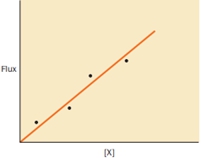Passive membrane transport is a crucial biological process that allows substances to move across cell membranes without the expenditure of energy. This process can be divided into two main categories: simple passive transport (or simple diffusion) and facilitated passive transport (or facilitated diffusion).
Simple passive transport involves the direct movement of small, nonpolar molecules through the phospholipid bilayer of the membrane. This type of diffusion occurs from an area of high concentration to an area of low concentration, following the concentration gradient. Molecules such as carbon dioxide, oxygen, and nitrogen gas are prime examples of substances that can pass through the membrane via simple diffusion due to their small size and nonpolar nature.
On the other hand, facilitated passive transport also moves substances from high to low concentration but requires the assistance of membrane transport proteins. Despite this facilitation, the process remains non-energetic, meaning it does not utilize ATP or any other form of energy. Charged or larger molecules, which cannot easily cross the lipid bilayer, rely on these proteins to help them traverse the membrane. This mechanism ensures that essential ions and nutrients can enter or exit the cell efficiently.
In summary, both simple and facilitated passive transport are vital for maintaining cellular homeostasis, allowing cells to regulate their internal environments without expending energy. Understanding these processes is fundamental for studying cellular functions and the movement of substances in biological systems.


